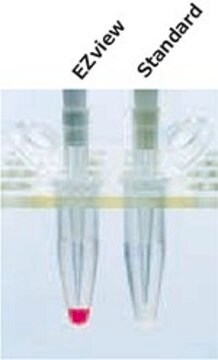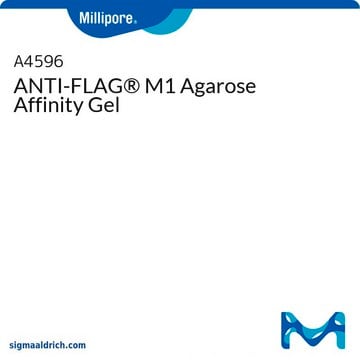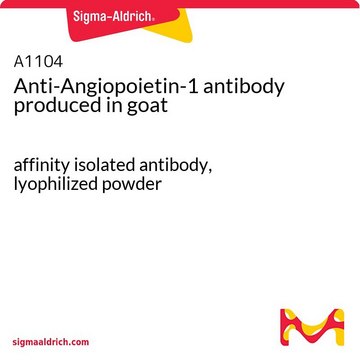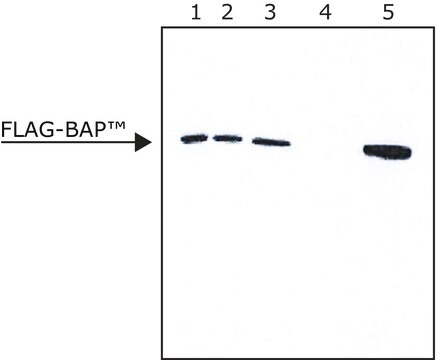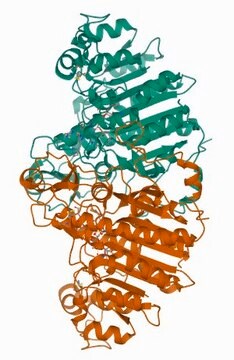A2220
ANTI-FLAG® M2 Affinity Gel
purified immunoglobulin, buffered aqueous glycerol solution
Synonym(s):
Monoclonal ANTI-FLAG® M2 antibody produced in mouse, ANTI-FLAG® M2 Affinity Agarose Gel, Anti-ddddk, Anti-dykddddk
About This Item
Recommended Products
conjugate
agarose conjugate
antibody form
purified immunoglobulin
antibody product type
primary antibodies
clone
M2, monoclonal
form
buffered aqueous glycerol solution
analyte chemical class(es)
proteins
technique(s)
affinity chromatography: suitable
immunoprecipitation (IP): suitable
matrix
(4% agarose bead; 45-165μm bead size)
isotype
IgG1
capacity
>0.6 mg/mL, resin binding capacity (FLAG-BAP)
shipped in
wet ice
storage temp.
−20°C
Looking for similar products? Visit Product Comparison Guide
General description
Elution - FLAG® peptide, Glycine, pH 3.5, 3x FLAG® peptide
Immunogen
Application
Learn more product details in our FLAG® application portal.
Physical form
Legal Information
Disclaimer
Not finding the right product?
Try our Product Selector Tool.
also commonly purchased with this product
related product
Storage Class Code
10 - Combustible liquids
WGK
WGK 1
Flash Point(F)
Not applicable
Flash Point(C)
Not applicable
Certificates of Analysis (COA)
Search for Certificates of Analysis (COA) by entering the products Lot/Batch Number. Lot and Batch Numbers can be found on a product’s label following the words ‘Lot’ or ‘Batch’.
Already Own This Product?
Find documentation for the products that you have recently purchased in the Document Library.
Customers Also Viewed
Related Content
Protein purification techniques, reagents, and protocols for purifying recombinant proteins using methods including, ion-exchange, size-exclusion, and protein affinity chromatography.
Our team of scientists has experience in all areas of research including Life Science, Material Science, Chemical Synthesis, Chromatography, Analytical and many others.
Contact Technical Service


